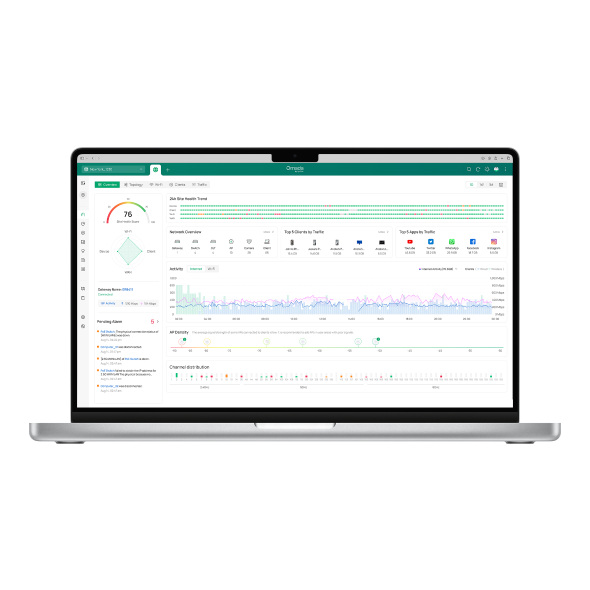How to configure the WLAN Group function on Omada Controller (V3 or below version)
The WLAN Group function provides an easy way to deploy your wireless network. It allows you to preset groups of SSIDs with desired wireless parameters and quickly apply them to your EAPs. According to your needs, you can apply different WLAN Groups to different EAPs or one WLAN Group to all of them.
Configuration Steps
To configure the WLAN Group function, follow the steps below:
Note: By default, there is a WLAN Group named Default.
1) Go to Wireless Settings > Basic Wireless Setting.
2) Click  next to WLAN Group to add a WLAN Group.
next to WLAN Group to add a WLAN Group.

3) Specify a name for the WLAN Group and click Apply.

After you create a WLAN Group, you can click  to edit the name of the WLAN Group.
to edit the name of the WLAN Group.
1) Select the desired WLAN Group from the drop down list of WLAN Group and click  to add an SSID to the specific WLAN Group.
to add an SSID to the specific WLAN Group.

2) Configure the parameters according to your needs and click Apply. For detailed information about the parameters, refer to the User Guide.

After you add an SSID to the WLAN Group, you can click  to configure the SSID.
to configure the SSID.
Note: Only after you apply a WLAN Group to the EAP, the SSIDs of the WLAN Group will take effect.
1. Click the EAP’s name on the Access Points tab.

2. Then go to Configuration > WLANs.

3. Select the desired WLAN Group from the drop-down list to apply the WLAN Group to the EAP.

In a hotel, the administrator wants to deploy an EAP for each guest room and the office. Guest rooms and the office require wireless networks of different parameters:
1) There should be two SSIDs in the office. The networks use the WPA-PSK security mode. One SSID named Office_Workers is for the employees and grants them full access rights. The other SSID named Office_Visitors is for the visitors and has Guest Network enabled to block access to private networks.
2) There should be two SSIDs in the guest rooms. The networks use portals for authentication. One SSID named Guest_Room is for common guests and has rate limits. The other SSID named Guest_Room_VIP is for the VIPs and has no rate limits.

To meet the requirements, create two WLAN groups, one for the office and the other for the guest rooms, separately add SSIDs for the office and guest rooms to different WLAN Groups. Next, apply the WLAN Groups to corresponding EAPs. Take the following steps:
Step 1. Create WLAN Groups
1. Go to Wireless Settings > Basic Wireless Setting. Click  next to WLAN Group to add a WLAN Group. Specify the name as Office. Click Apply.
next to WLAN Group to add a WLAN Group. Specify the name as Office. Click Apply.

2. In the same way, add another WLAN Group. Specify the name as Guest_Room.

Step 2. Add SSIDs to the WLAN Groups
Add SSIDs to the WLAN Group Office
1. Select Office from the drop-down list of WLAN Group. Click  to add an SSID to the WLAN Group.
to add an SSID to the WLAN Group.

2. Specify the SSID Name as Office_Workers. Keep Guest Network disabled. Configure the Security Mode as WPA-PSK and set the Wireless Password. Click Apply.

3. In the same way, add another SSID named Office_Visitors and enable Guest Network.

4. Now, check the configuration. The WLAN Group Office should be like this:

Add SSIDs to the WLAN Group Guest_Room
1. Select Guest_Room from the drop-down list of WLAN Group. Click  to add an SSID to the WLAN Group.
to add an SSID to the WLAN Group.

2. Add an SSID named Guest_Room to this WLAN Group. Configure the Security Mode as None. In Advanced Settings, enable Rate Limit and set the rate limit according to your needs.


3. Add another SSID named Guest_Room_VIP to this WLAN Group. Configure the Security Mode as None. In Advanced Settings, disable Rate Limit.


4. Configure portals for the two SSIDs. To configure a portal, go to Wireless Control > Portal and click Add a New Portal.

5. Select the desired SSIDs and configure the parameters according to your needs. For detailed information about the parameters, refer to the User Guide.

6. Now, check the configuration. The WLAN Group Guest_Room should be like this.

Step 3. Apply WLAN Groups to the EAPs
1. Click the name of EAP A (the EAP located in the office) on the Access Points tab.

2. Then go to Configuration > WLANs.

3. Select Office from the drop-down list of the WLAN Group to apply it to EAP A.

4. In the same way, apply the WLAN Group Guest_Room to EAP B, EAP C and EAP D (those EAPs located in the guest rooms).
Get to know more details of each function and configuration please go to Download Center to download the manual of your product.
Is this faq useful?
Your feedback helps improve this site.










